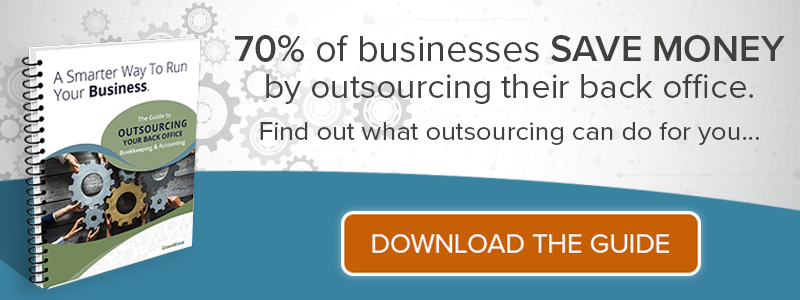5 min read


I know what you’re thinking– “I want to avoid incurring new expenses in the form of upfront software costs and subscription fees.” But the money you think you're saving is actually costing you more money, time and unforeseen long term issues.
|
Key Takeaways
|
High-tech accounting systems and technology tools exist to help businesses improve efficiencies, reduce errors, save money and increase revenue. So continuing to waste time, labor hours, and potential on manual accounting systems is a costly mistake.
10 Ways Manual Accounting Systems Cost Your Business
1. Inefficient Use of Employee Time
When your employees spend time performing inefficient bookkeeping and accounting tasks (think fetching data, wrangling paperwork, and data entry), you're spending top-dollar on tasks that relatively low-cost technology could accomplish better and more quickly.
By reducing the time employees need to complete their work, as well as the number of employees needed on each task, automation translates to more hours focused on doing work that drives profits. You're missing out on the potential revenue you could earn when you leverage your employees' talents and time smartly.
Human capital is your business's asset with the biggest potential for driving revenue. Your employees will be able to focus on high-level work that drives your business forward.
2. Inaccurate Time Tracking
Does your company still use old-fashioned time cards? Does your human resource department still track employee time, paid time off accrual, and PTO usage manually? How much time do they spend on these tasks and how much time do they spend answering inquiries about PTO accruals? How much do you pay HR employees to accomplish these tasks?
Consider those expenses a loss.
There are accounting system integrations that you can use to automate time tracking and benefits accrual/usage across your company. One of our favorites is TSheets. As a result, you can free up the brains in your human resource department to work on more goal-oriented tasks like pitching ideas for employee achievement bonuses, recognition, and rewards.
So, not only are outdated time tracking systems costing your money, but they're also responsible for your business missing out on potential growth via a more robust human capital strategy.
This is particularly important for service businesses that make money on people’s time. To build a highly-profitable service business, you must have a time-tracking system that is integrated with payroll, scheduling and leave management. This integration allows them to perform true job costing, optimize their pricing and, ultimately, make more money.
3. Unreliable Data
Manual accounting processes are inaccurate, slow, and unreliable. As a result, it's impossible for you to know whether you can rely on the accuracy of your business's numbers or know whether the data you're looking at is current.
An inefficient accounting process, with data that doesn't seem accurate, and does not provide actionable reports to help you make decisions, is useless.
Manual accounting processes wind up costing you money in the long run– besides the inefficient processes that eat up valuable employee time, but also with additional (unplanned) costs incurred from your CPA– to catch up and clean up the books, clear up discrepancies, and fix errors. Manual processes are not as accurate as automated processes, and not able to be implemented into actionable reports to help business leaders make data-driven decisions.
If you find that you can't rely on your processes, numbers and financial reports, or get them timely and consistently, then you have a major problem with your existing accounting processes.
You can't use this kind of data to set goals or to track your progress. As a result, your business will lack direction and a unified motivational structure, and your bottom line will hurt as a result.
4. Potential for Fraud
No matter how many checks and balances you have in place, manual bookkeeping and accounting processes have security holes that expose your company to internal and external fraud risks. These risks aren't something you can ignore, and hope they never happen to you.
It's estimated that as many as 30% of business failures occur due to fraud [1].
While losses affect all businesses negatively, smaller companies aren't as equipped to weather significant losses. Generally speaking, the smaller business, the higher the risk of fraud. In fact, companies with fewer than 100 employees incur a median loss of $200,000 due to fraud – nearly twice as much as those incurred by businesses with more than 100 employees.
Automated bookkeeping and accounting systems are a good starting point because they have internal controls, built-in checks and balances, that improve security to help minimize the potential of fraud risk, making it much more difficult for individuals to take advantage of your system.
In addition, having separation of duties, a second set of eyes, is another very important piece of reducing or eliminating the risk of fraud.
5. Poorly Timed Payables
Paying your bills on time is essential for your business's reputation and credit, and it will also save you from incurring unnecessary costs in late fees or late payment interest accruals. Additionally, you can take advantage of early payment discounts and even save money by paying certain invoices before they're due whenever possible.
Without automating these processes, juggling all your company's payables and keeping them perfectly/expertly timed is a big enough task for a single employee to handle full-time. You'll lose way more in overhead costs when you hire a full-time employee to manage your payables than you would if you took advantage of a system like Bill.com that automatically syncs your payables with QuickBooks.
The Wall Street Journal estimated that the average small business spends $12 to pay a bill. By using Bill.com to pay bills electronically, the cost to pay a bill can be slashed to around $1.50.
6. Sloppy Invoicing
You’ll also see similar cost savings in your collection processes. Similar costs occur in a manually operated receivables department. Additionally, perfectly timed invoicing is a complicated task for an employee to handle efficiently.
If you don’t automate collections, you risk delays and inconsistencies in collecting on unpaid accounts, not charging a late fee penalty to deter future late payments, and will constantly be operating with limited cash flow due to high days sales outstanding.
With automated invoicing and electronic payment solutions, you get paid sooner, save employee time and most importantly, will improve your company's cash flow.
7. Clunky Expense Management
The days of tracking expenses with paper spreadsheets, manual reimbursement approvals, and manual expense categorization, is over. Manual expense management leaves room for addition/subtraction error and fraud. Primarily, losses occur due to the enormous amount of time required for tackling and organizing all the paperwork associated with the task.
Instead of continuing to manually manage expenses, streamline the task of expense submission, documentation, and approval with an app like Expensify.
Expensify touts that its system is 83% quicker than employees filling out manual expense report spreadsheets.
You'll still have eyes on the money going out of your business, but there will be way less time spent reading through receipts and spreadsheets, cutting reimbursement checks and you’ll find it much easier when approving expenses.
8. Tax Reporting Errors
Manually managing processes like your sales tax reporting and 1099 reporting requires a huge amount of employee time. Employees are not only required to handle these tax reporting requirements, but they also have to keep up with ever-changing tax laws and regulations locally and federally.
Automating these functions in your business not only provides protection from inaccuracies and non-compliance but also saves time.
9. Badly Timed Hires
At one point in time, every business owner has asked themselves: “When Should I Hire More Employees?”
Manual accounting systems make it nearly impossible to predict employee retention or business growth, which makes it exceedingly difficult to properly time your hires.
Does your accounting system allow you to access the management reports that can help you predict when you'll need to expand a certain department, and how soon your new hire will need to be up to speed?
If not, then you're missing out on the potential to smooth your company's growth and save on the expenses of poorly timed hires. When you're able to hire just in time you'll avoid the unnecessary costs associated with increasing overhead before you need to and lagging production due to a workforce that's stretched too thin.
10. Poor Cash Flow Forecasting
Businesses fail for 3 reasons: cash flow, cash flow, and cash flow.
With manual accounting systems, you'll struggle to have a clear picture of your company's current cash flow forecast. As a result, you'll struggle to see challenges before they arise and you'll miss the opportunity to make data-driven decisions to help you overcome future cash flow challenges.
With automated accounting and bookkeeping systems in place, you'll always have the most accurate perspective on your company's current cash flow state. This will allow you to make the strategic decisions now to protect your business's future.
Combine Team with Technology for the Biggest Payoff
It might seem like this type of automation is designed to replace your employees, but that simply isn't true.
The successful implementation of automated tools and streamlined accounting processes will simply free up your valuable employees time, enabling them to focus on higher-value tasks. As a result, when it comes to the cost of employee time, you'll see a much higher ROI when you invest in robust, integrated tools to automate your back office.
[1] https://www.orsurety.com/blog/30-percent-of-business-failures-are-caused-by-employee-theft

.png?width=2000&height=440&name=Transitional%20GF%20Logo%20-%20Transparent%20(1).png)

